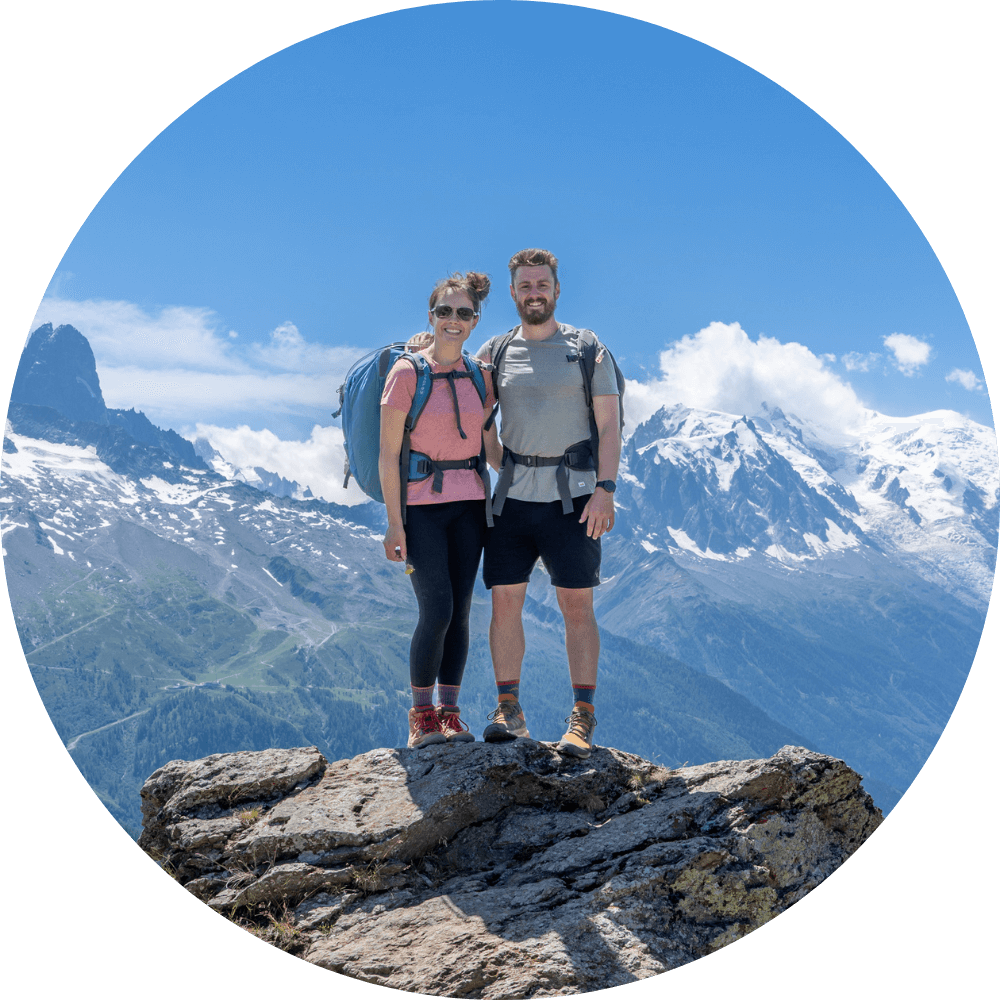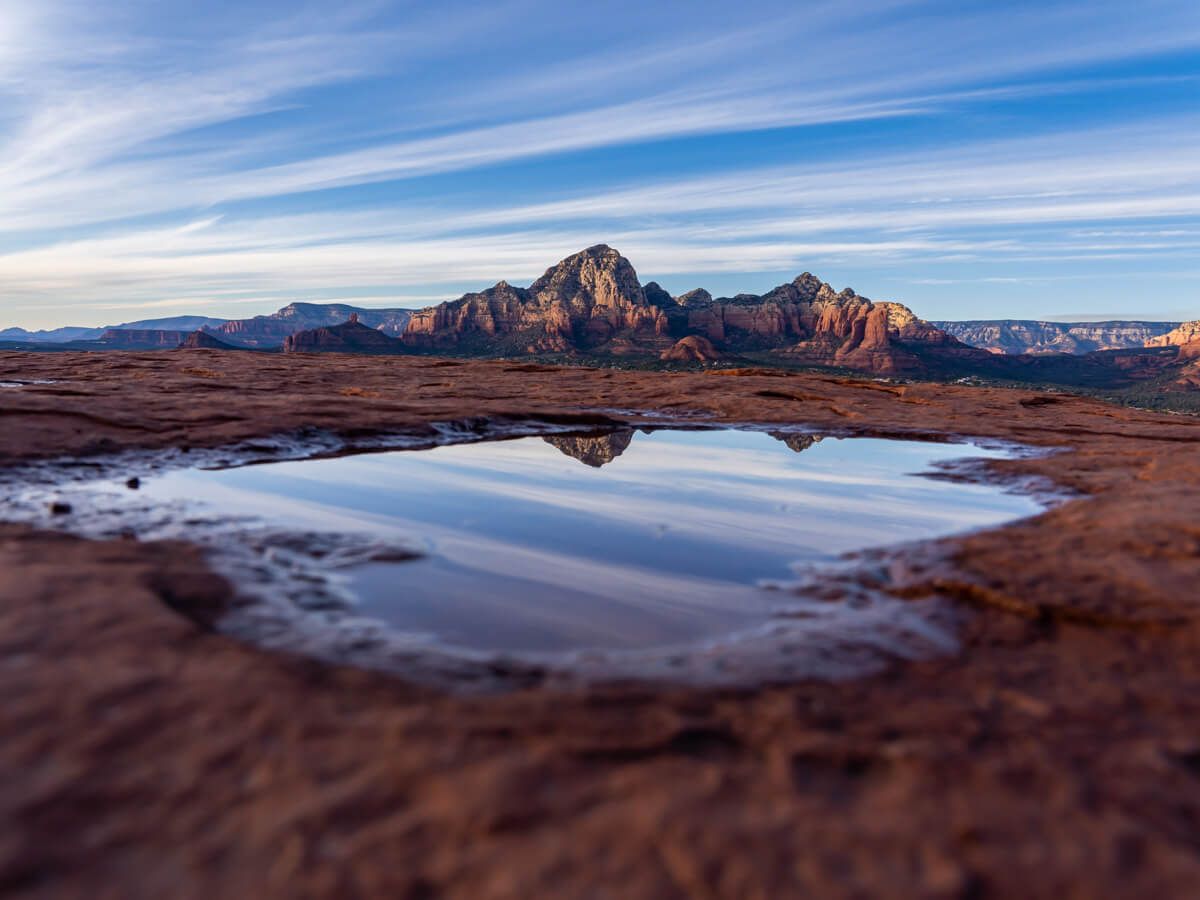Sedona’s vortexes are believed to emit electromagnetic earth energy and many people report feeling physical, mental and emotional connections. We visited the 4 main vortex sites which are considered to be Airport Mesa, Bell Rock, Boynton Canyon and Cathedral Rock. And we also found more areas hidden around Sedona with the same energy, just without the crowds.
In this guide we show you where to find the Sedona vortexes and what to expect at each site, based on our experiences.
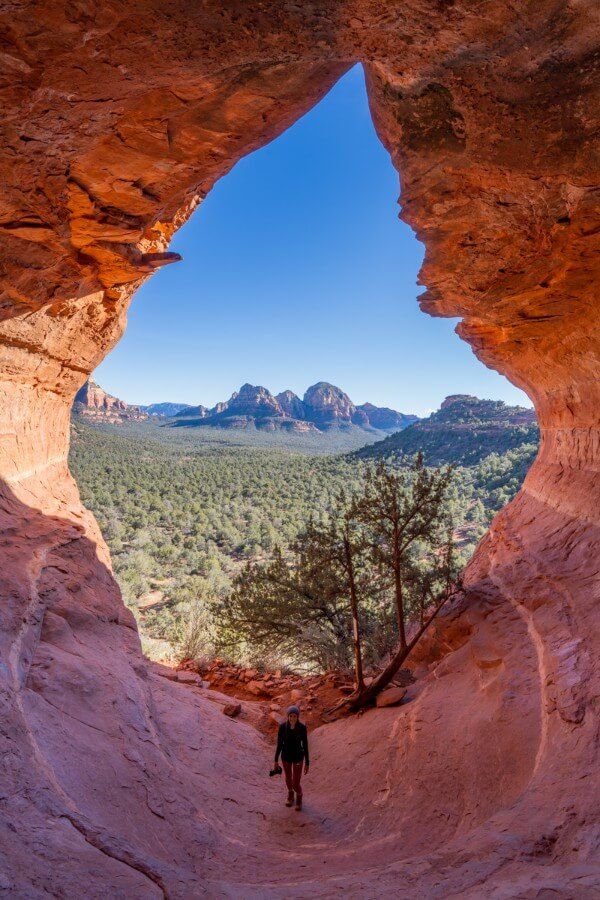
In total, we made it to all 4 of the famous sites along with 4 lesser known vortexes during our amazing 8-day trip to Sedona in December 2021. Some were easy to reach, while others were a bit more challenging because we had to access them by hiking. Read more about us.
We’ve included a Sedona vortex map so you can see if any of the hikes you plan to do line up with vortexes in the area. And if you time it right, you can visit several of Sedona’s vortexes in the same day. Okay, let’s begin!
Note: Our content is reader supported and contains affiliate links. If you make a purchase through one of these links, we may earn a small commission at no extra cost to you and it helps us keep this site running.
SEDONA Planning
📖 Ultimate Sedona Guidebook: Get our complete 50+ page offline PDF with everything you need for Sedona.
📞 Personalized Sedona Planning Call: Book a 60 minute call with Mark to have your questions answered, optimize your itinerary, avoid tourist traps and get our best insider tips.
💡 Still Planning? Read our essential first-timer’s guide to visiting Sedona.
What Are Sedona’s Energy Vortexes?
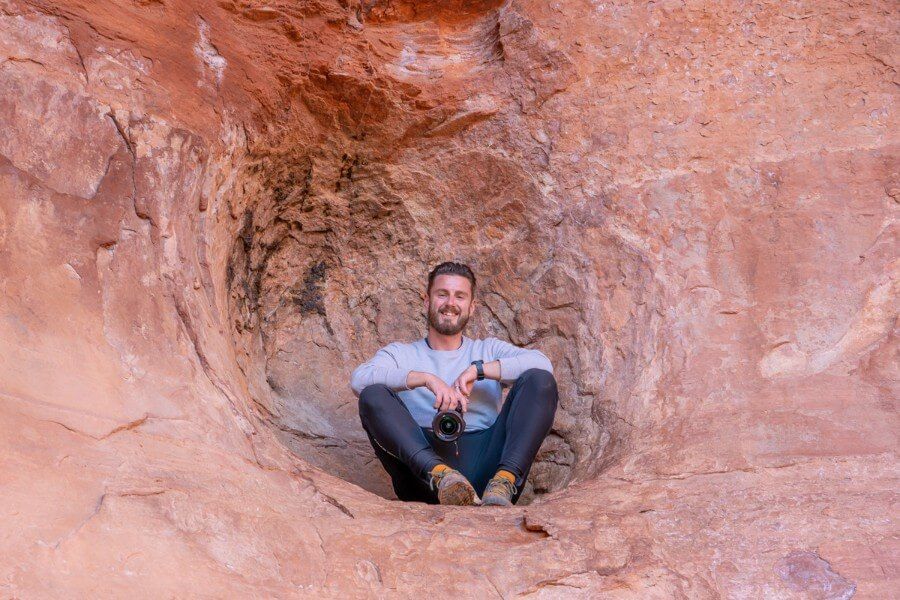
A vortex is an invisible spot on earth with a vibrating center of energy. These vortexes can be found all around the world and many people believe these sites help promote healing or self-exploration.
After visiting a vortex site, people report feeling inspired, uplifted and recharged due to this dynamic energy. The energy of a vortex site is directly related to the strength and concentration of energy it emits.
Sedona vortexes produce either upward flowing or downward flowing energy. It’s no surprise, the most powerful sites in Sedona produce a combination of both upward and downward energies.
One of the most notable characteristics of the vortexes in Sedona are the Juniper trees. According to many, these trees are the only physical evidence we have of powerful vortex sites.
The energy found at the Sedona vortexes is strong enough to severely twist the branches and trunks of these trees. However, if you look closely, Juniper trees often lay beside perfectly straight trees.
Sedona Vortex Locations
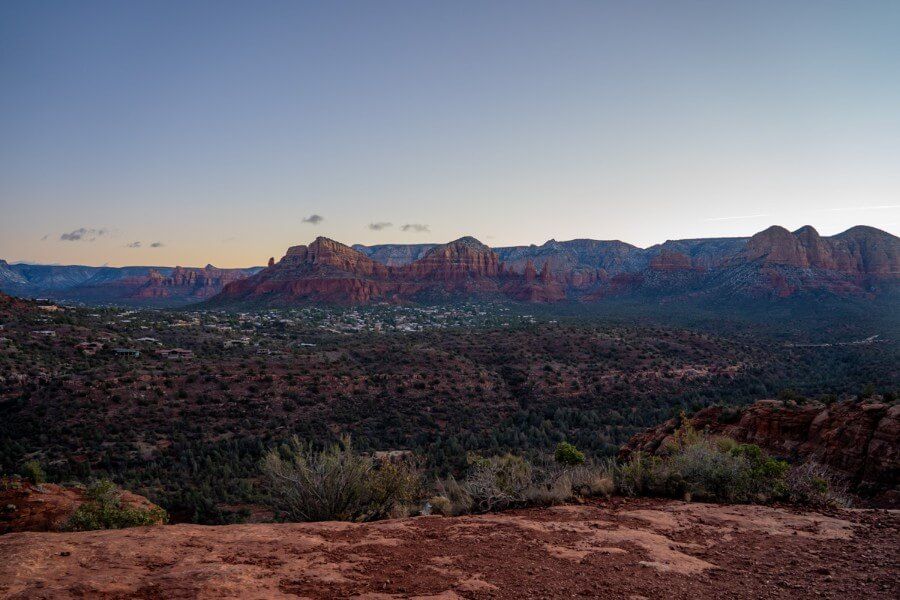
According to some believers, Sedona sits on one big vortex. And some would go as far as saying that Sedona has hundreds of individual vortex sites spread throughout the entire region.
Depending on who you ask, energy vortex fields can be felt up to a half-mile away. For this reason, Sedona is regarded as a sacred and powerful place.
As far as we know, there are four main vortex sites in addition to four lesser known vortex sites.
- Main vortex sites: Cathedral Rock, Airport Mesa, Bell Rock and Boynton Canyon.
- Lesser known vortex sites: Chapel Of The Holy Cross, Red Rock Crossing, Schnebly Hill and West Fork.
There are several other sites in and around Sedona that are also associated with energy, but in this guide we focus on the eight Sedona vortex sites listed above.
Many of Sedona’s vortex sites are located directly next to some of the most scenic spots in the region and it’s common to see people practicing meditation or yoga at these locations. Visiting all of the vortexes is one of the most popular things to do in Sedona.
Okay, five of the eight of these vortex sites are located south of Sedona while the remaining three are independently scattered to the north, east and west.
Here’s our map of the 8 Sedona vortex sites or you can access it via this link here.
You can get to all the vortexes sites in Sedona with a combination of driving and hiking. Some of the vortexes on this list will require hiking while others can be easily reached with minimal walking.
However, if you are short on time or you would prefer someone else to do the driving, a Sedona vortex tour would be a great option. We will discuss tour options later in this guide.
For each Sedona vortex site we have also discussed parking information because there are different pass requirements depending which vortex you plan to visit.
Now, let’s get into Sedona’s eight vortex sites:
1. Airport Mesa Vortex
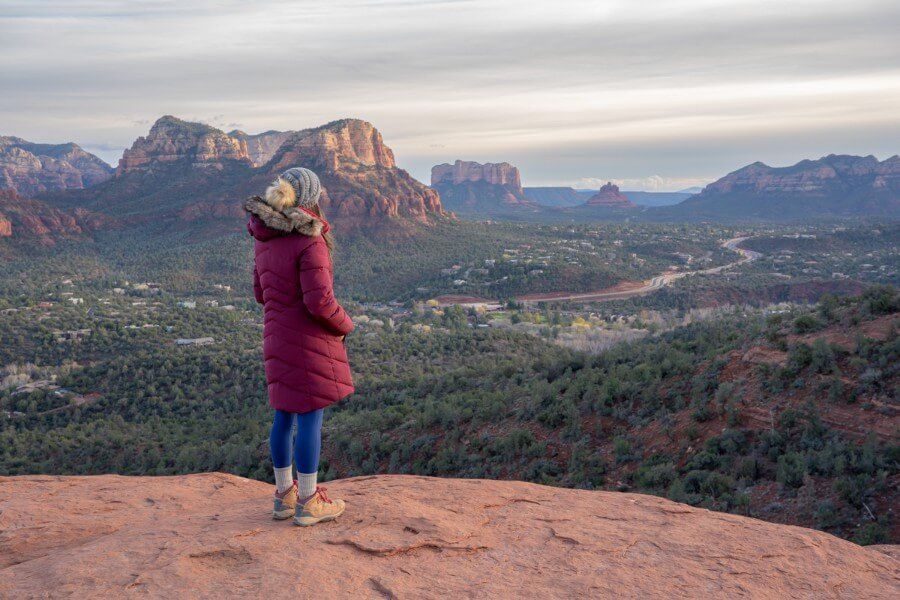
Airport Mesa is the most well known vortex in Sedona. It’s the most accessible vortex because it features a very short hike and can be visited with a car.
The Airport mesa vortex is an upflowing vortex with a masculine energy. This site features a 360-degree view of Sedona making it the perfect spot to visit for sunrise or sunset.
The masculine energy found at Airport Mesa can help you realign your self worth. This energy strengthens the internal spirit and encourages visitors to take charge of their own life by fostering confidence.
We visited the Airport Mesa Sedona vortex at sunset and highly recommend this time of day if you can make it work. It’s one of the things you really can’t miss if it’s your first time visiting Sedona.
Parking pass required: No parking pass required if you park in the small lot along Airport Rd (about 10 cars) or $3.00 to park at Sedona Airport Vista Overlook.
Need help planning your trip to Sedona?
Our Sedona travel guidebook gives you hidden gem hiking trails, secret caves, vortex sites, ancient ruins, wineries, jeep trails, photo spots, where to eat and stay, 1-5 day itinerary ideas and much more. Plus, you’ll get an exclusive map to use in Sedona!
View Guidebook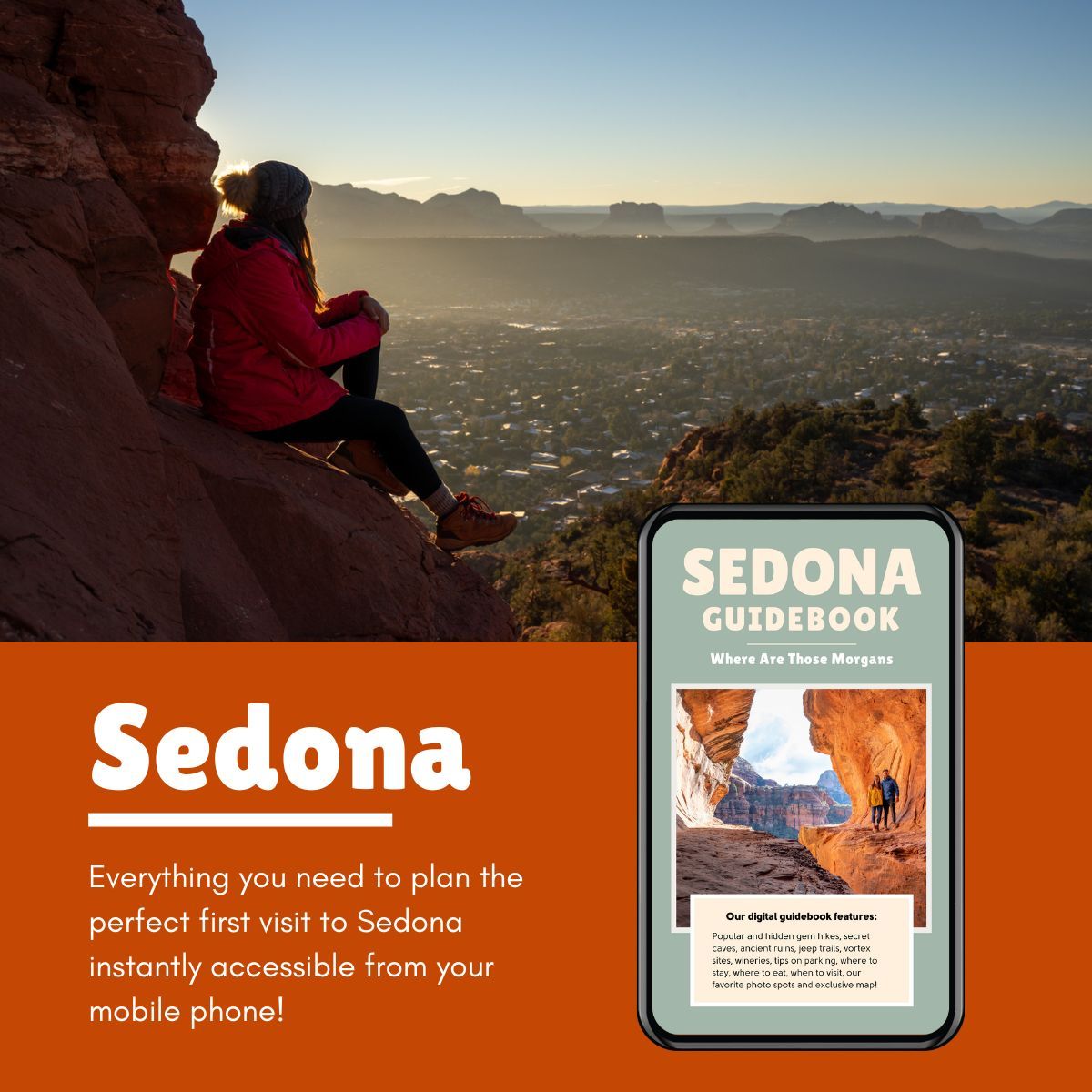
2. Bell Rock Vortex
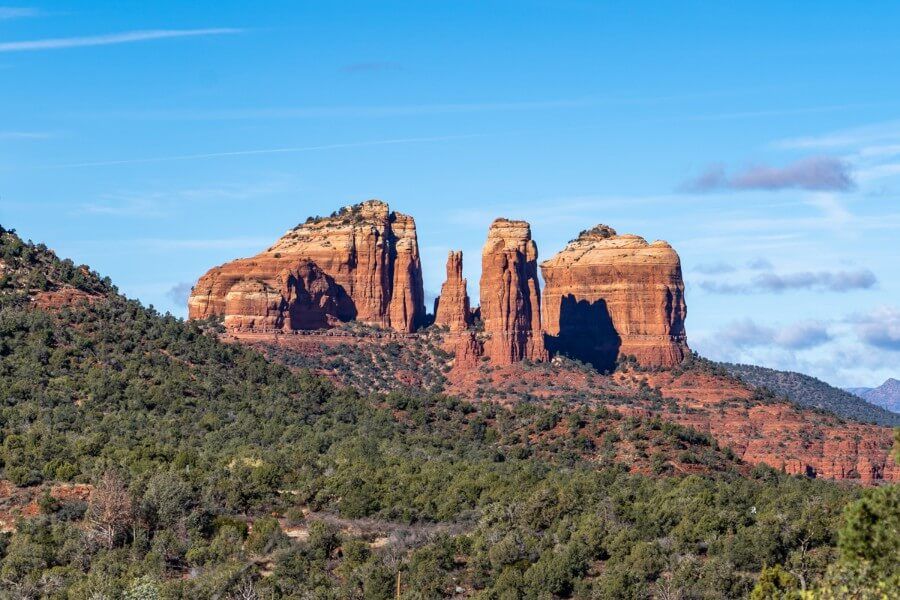
Bell Rock is one of the most recognizable formations in Sedona because it looks like a large standing bell. This vortex site is also easily accessible because you can reach it with a short hike.
Similar to Airport Mesa, the energy found at Bell Rock is upward flowing so the energy is very intense with many reporting strong vibrations originating from the north side.
Many visitors to the Bell Rock vortex site are inspired to find serenity or enhance their spirit from within. This energy increases self awareness by balancing the mind, body and soul through reflection.
We hiked to Bell Rock in the middle of the afternoon on a cold day in December and we had the trail to ourselves.
Parking Pass Required: Red Rock Pass or America the Beautiful Pass.
3. Cathedral Rock Vortex
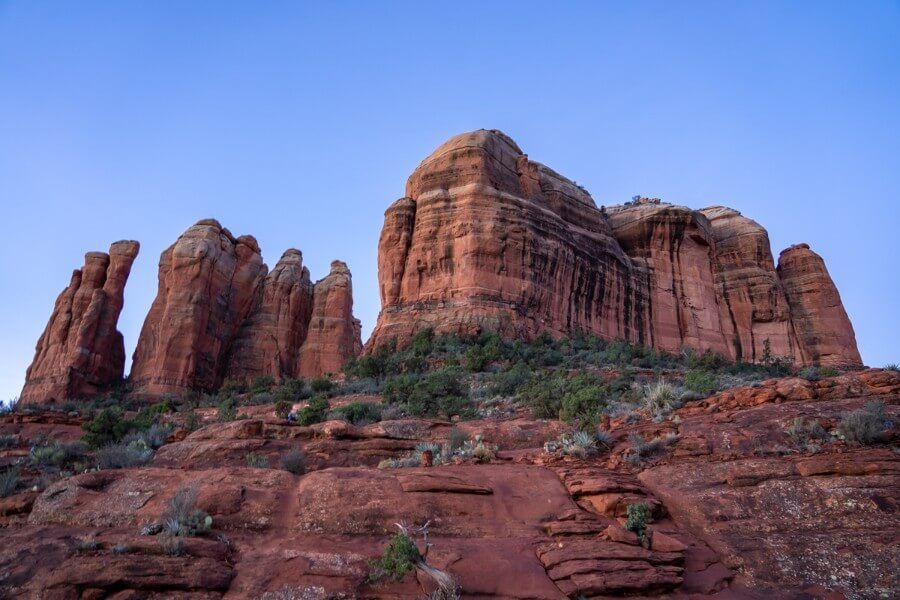
The most powerful vortex site in Sedona is Cathedral Rock. But in order to experience this vortex at its strongest, you will have to hike up to the Saddle of Cathedral Rock.
This the only major vortex site with downward flowing energy. The feminine energy helps both mind and body for a complete cleansing effect making it an extremely popular mediation spot.
Since Cathedral Rock is the strongest vortex in Sedona, many visitors report the ability to reconnect to the energy of the earth as well as others around them after mediation here.
This energy will positively affect your ability to communicate and connect to your feminine side. To feel the strongest energy, you will need to hike to the top saddles between the spire.
We hiked to Cathedral Rock for sunrise and it was one of our favorite mornings in Sedona.
Parking Pass Required: Red Rock Pass or America the Beautiful Pass.
4. Boynton Canyon Vortex
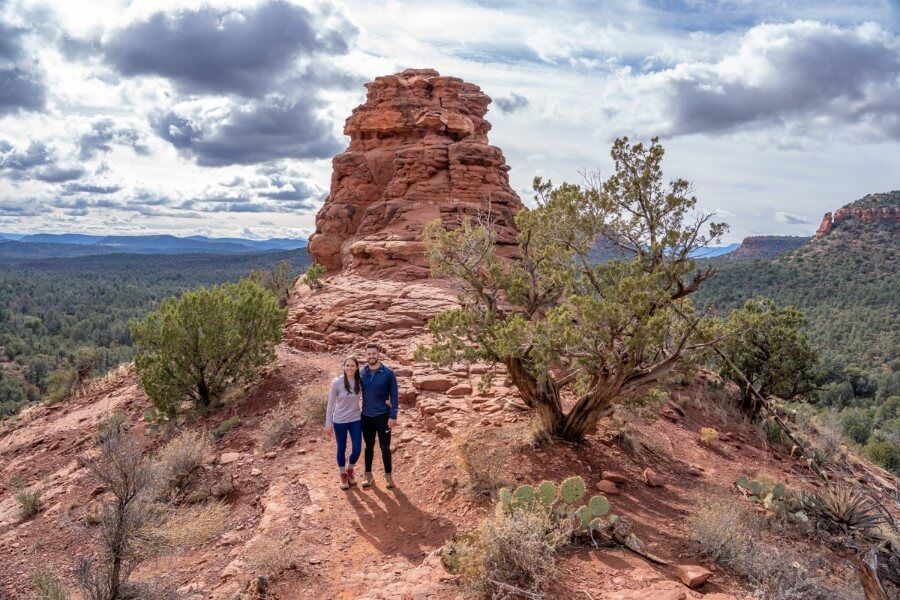
Boynton Canyon vortex sites is also known as the Kachina Woman vortex. This site emits a combination of energy and is one of the most sacred locations on this list.
Boynton Canyon has been an extremely sacred place for the native Yavapai-Apache culture. In ancient times, they would not enter this area without first purifying themselves by fasting or meditating.
Many people report feeling grounded, uplifted and recharged. The energy here is balanced between both masculine and feminine which mimics a yin and yang effect.
Similar to Cathedral Rock, the energy at this vortex strengthens all three parts of the spiritual being. This can benefit relationships by building intimacy, openness and honesty.
If you visit this site, you may see colorful prayer ties which are left as an offering. You can access the Boynton Canyon vortex from the Boynton Canyon Trail by following the signs for Vista Trail.
At the end of the trail, you will see the Kachina woman (feminine vortex) and the knoll (masculine vortex) where the energy is the strongest.
Parking Pass Required: Red Rock Pass OR America the Beautiful Pass.
5. Chapel Of The Holy Cross
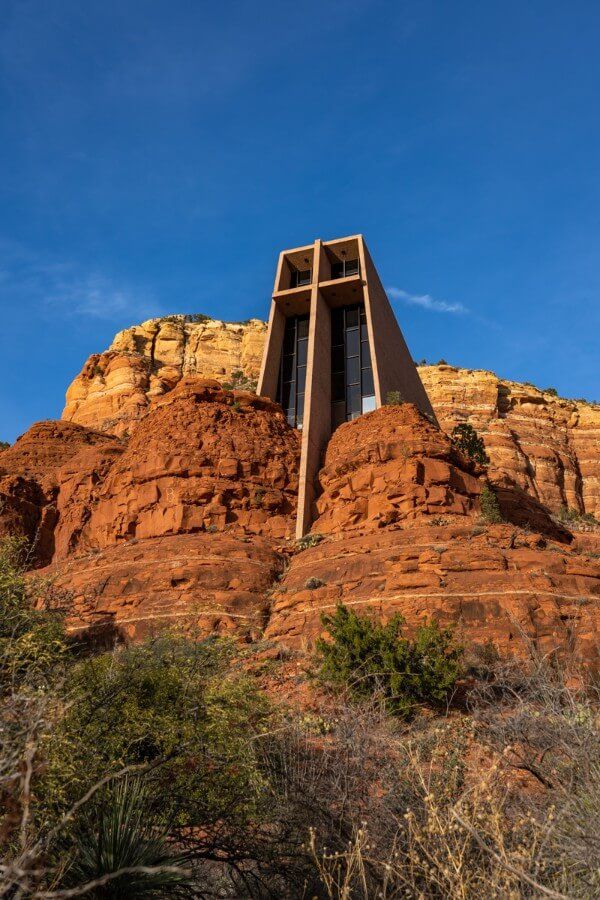
The Chapel of the Holy Cross might just be the most interesting building in all of Sedona. It was originally inspired by Marguerite Brunswig Staude’s first visit to the Empire State Building. The large chapel is built directly into the red rocks and looms over Sedona.
During your visit, look for an eagle carved into the rock perched high above the chapel. This eagle is protects the chapel from evil.
Many people report a feeling of inspiration and joy which aims to make a deep connection to the spirit. The energy of this vortex also emits love, harmony and oneness to unify all that visit.
You can drive to this Sedona healing vortex with no hiking required.
Parking Pass Required: None, but parking is extremely limited.
6. Red Rock Crossing
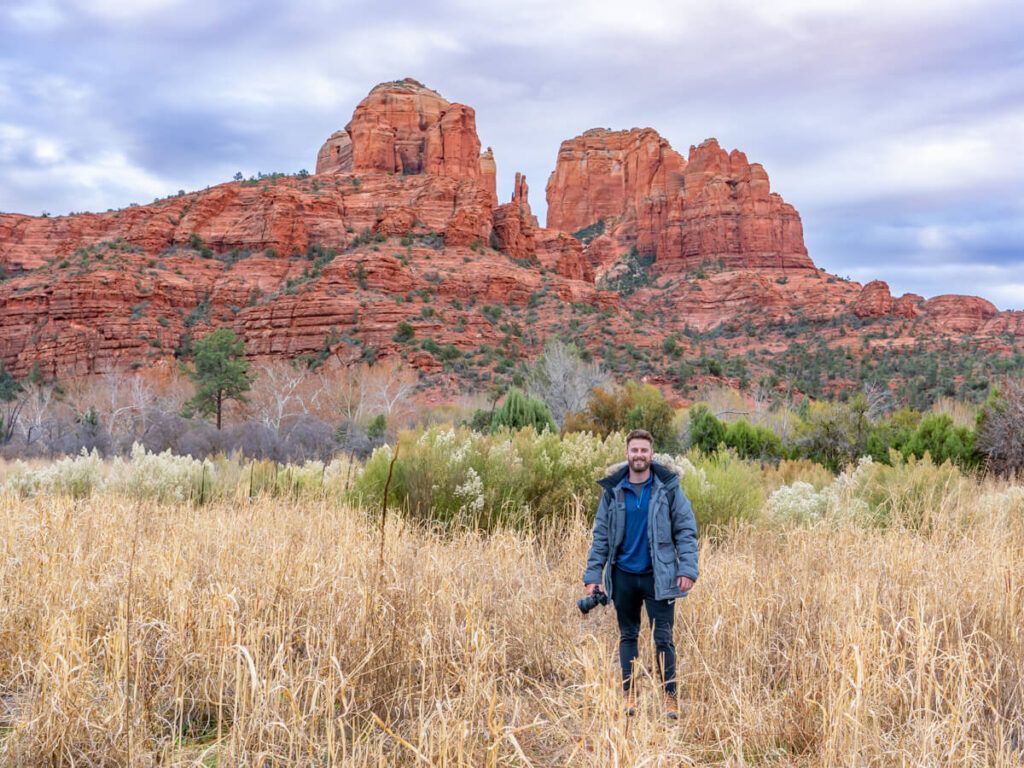
The Red Rock Crossing vortex site should not be confused with the Cathedral Rock vortex. It’s also known as Crescent Moon Ranch so visiting this vortex can be a little tricky.
We think Red Rock Crossing is a stunning photography spot in Sedona because it features Cathedral Rock in the distance. This is a downward flowing vortex site which helps to promote healing.
At this beautiful location, Oak Creek seems to flow right out of Cathedral Rock with the right perspective. When water levels are high, this is also a popular swimming or fishing spot.
Red Rock Crossing is a great place for families to escape the Sedona crowds. But this area is not included in the Red Rock pass system so you will have to pay an extra fee.
Parking Pass Required: None, but $11 vehicle fee required (includes West Fork Trail).
7. Schnebly Hill (Oak Creek Canyon Overlook)
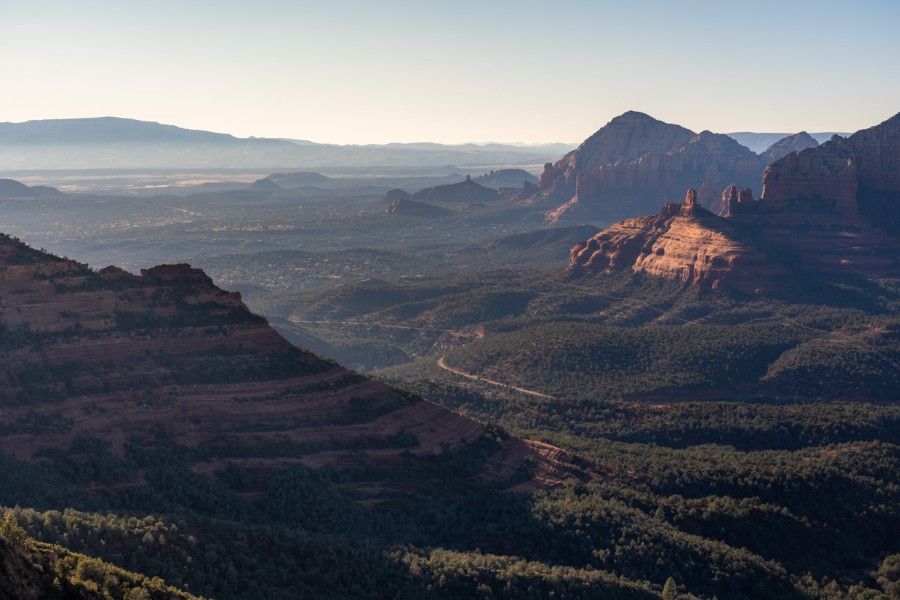
The Schnebly Hill vortex is good for those who want to explore off the beaten path. But in order to reach this site, you will need an off road vehicle. Filled with combination energy, this vortex cleans, purifies, balances and alights the spirit. It’s a great place for those who want to let go of old negative patterns.
A trip to the top of the Schnebly Hill vortex might just be one of your best adventures in Sedona. You will be rewarded with amazing views overlooking the city of Sedona and Oak Creek Canyon. You can only access Schnebly Hill vortex with a 4×4 vehicle. We rented a jeep and drove it up the bouncy rocky road all the way to the top.
Parking Pass Required: None, but 4×4 vehicle required on Schnebly Road.
8. West Fork Trail
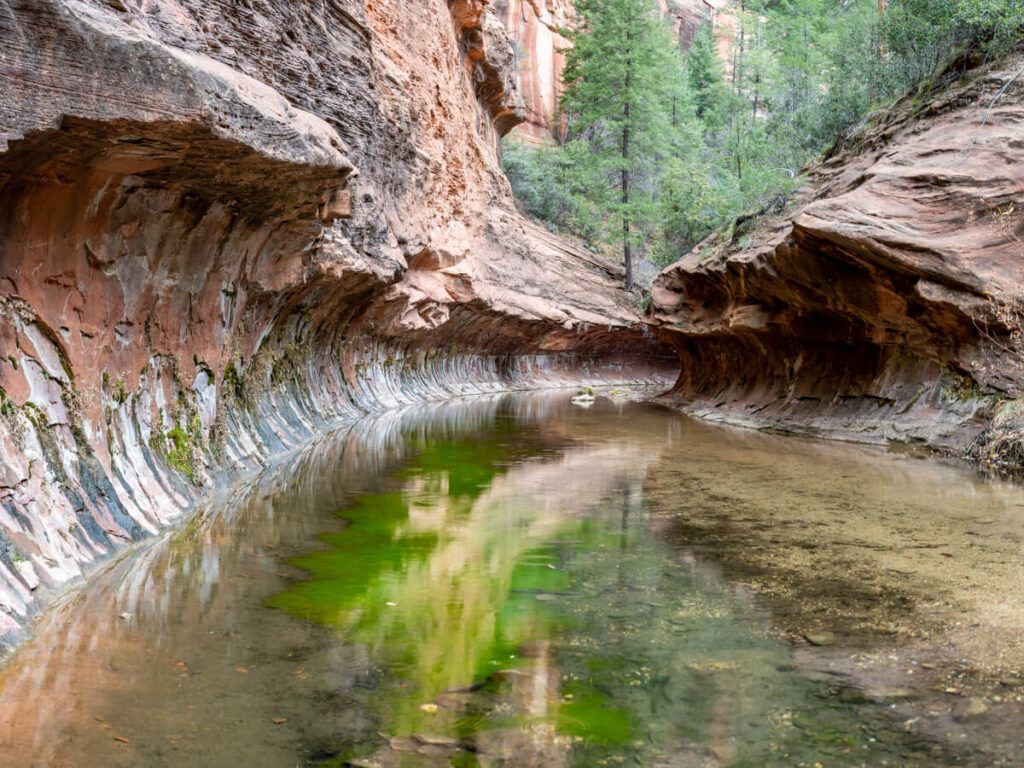
The West Fork Trail vortex is about 10 miles north of Sedona along the West Fork Trail. This trail features 13 river crossings and a subway tunnel climax. However, one of the best parts about this vortex site is that you will experience fewer crowds compared to other hiking trails in Sedona.
This area has combination energy and many report a strong energy with both upflow and inward experiences. We hiked West Fork Trail on our way into Sedona. This trail is about 7 miles in length and it features a tunnel at the end of the trail similar to the Subway in Zion.
Parking Pass Required: None, but $11 vehicle fee required (includes Red Rock Crossing).
Sedona Vortex Tours
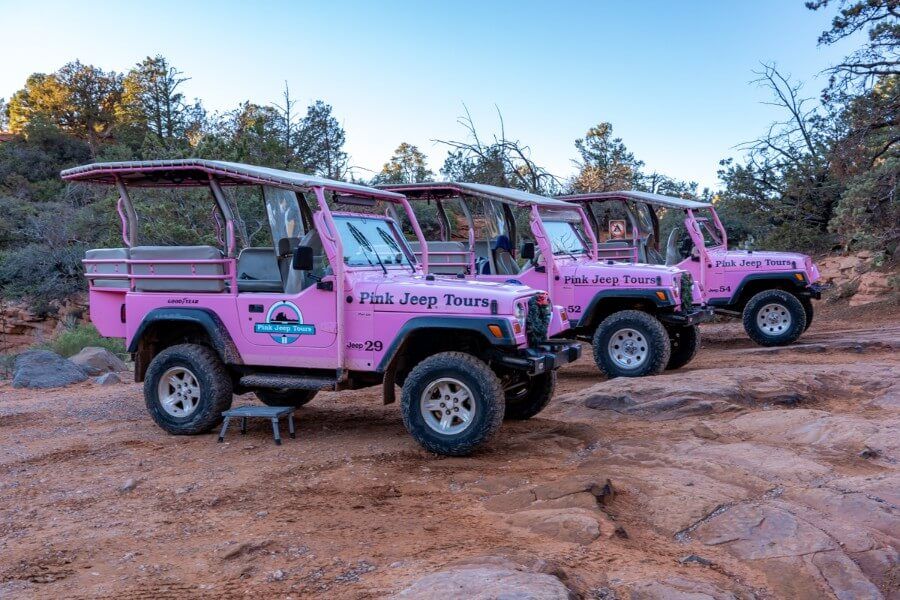
Vortex tours in Sedona are very popular. This is a great way to learn about the history from a local guide while not having to worry about knowing where to go or parking.
Check out some of Sedona’s top rated vortex tours below:
- Sedona Vortex Tour by Jeep – Visit several vortex sites in Sedona by jeep
- Four-Hour Sedona Vortex Tour – Enhance your spiritual journey with a half-day vortex hike and outdoor meditation
- Best Vortex and Chakra Tour of Sedona – Experience Amitabha Stupa Peace Park and a chakra reading
- Vortex Yoga Hiking: Half-Day in Sedona – Stop by Sedona’s vortex sites along with a yoga practice and chocolate meditation
If you only want to visit a few vortex sites in Sedona, below you will find our recommendations:
- Best vortex hikes: Cathedral Rock, Bell Rock and Boynton Canyon
- Vortexes you can access with a car: Airport Mesa, Chapel of the Holy Cross
- Most popular vortexes: Cathedral Rock, Airport Mesa
- Our favorite vortexes: Bell Rock, Airport Mesa
Common Energy Fields
There are three common energy sources in Sedona including upward flowing, downward flowing and a combination of the two.
An upward flowing vortex site produces masculine or electric energy. This type of energy helps you reflect on a higher perspective or acquire an out of the box mindset.
Many visitors report being able to find an answer to a problem, being one with the universe and strong views of faith after visiting an upward site. Popular vortex sites in Sedona with upward flowing energy include Airport Mesa and Bell Rock.
Physical attributes of upflow sites include stress reduction and lower blood pressure because they are found at high elevations such as mountains and mesa tops.
A downward flowing vortex site produces feminine or magnetic energy. This is inward energy and helps one to look within through prayer or meditation.
At inward sites, you can release old hurts and then nurture new growths. Many people visit inward sites to help heal scars from the past to help so they can move forward with the future. Popular vortex sites in Sedona with downward flowing energy are Red Rock Crossing and West Fork.
The most powerful vortex sites often combine upward and downward flowing energies. Combination energy sites lead to a practice of more advanced spiritual, mind and body skills.
Popular vortex sites in Sedona with combination energy are Cathedral Rock and Boynton Canyon.
Best Time To Visit
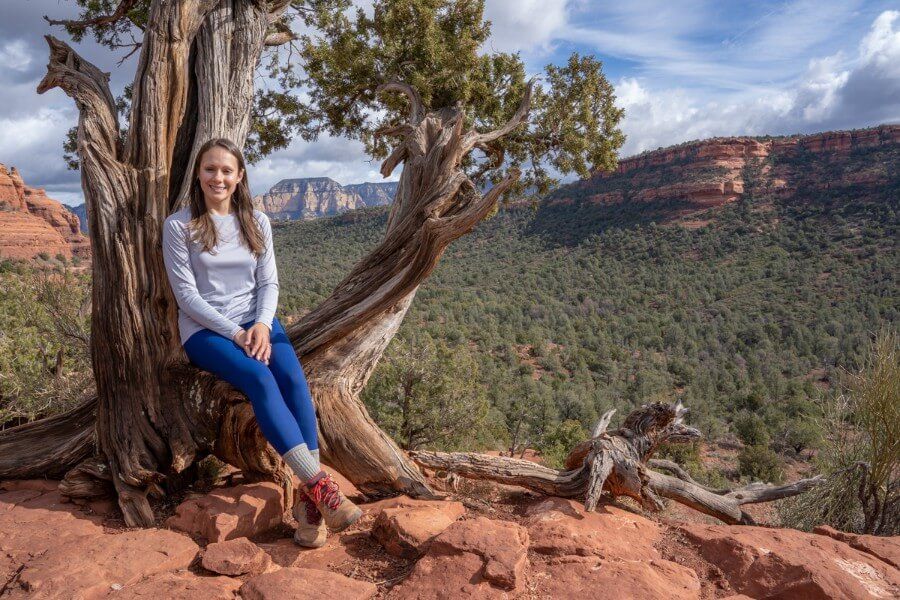
Spring and fall would be the best time to visit the Sedona vortexes when temperatures are cool. Arizona summer days are extremely hot ranging anywhere from 95°F to 110°F. Very heavy rains are common late June to early August during the early afternoon. It’s important to drink plenty of water and hydrate properly, especially in the summer months.
The vortexes near Sedona we mentioned are open year round. We visited Sedona in December and the weather was perfect for hiking at about 60°F. Visiting in the off season also means fewer crowds.
Winter days in Arizona tend to have an average temp of around 60°F with lows commonly in the teens. Snowfall is rare but is possible. Be sure to check the weather forecast when you visit and plan appropriately.
Here are a few important things to consider for visiting the Sedona Arizona vortexes:
- Arrive early in the day to avoid the crowds and the heat
- Be patient as these vortex sites can be very busy
- Respect the land and leave no trace
- Don’t forget the water and sunscreen
- Have a back up plan if you can’t find parking
Tip: Always practice the seven principles of Leave No Trace so others can enjoy the same environments.
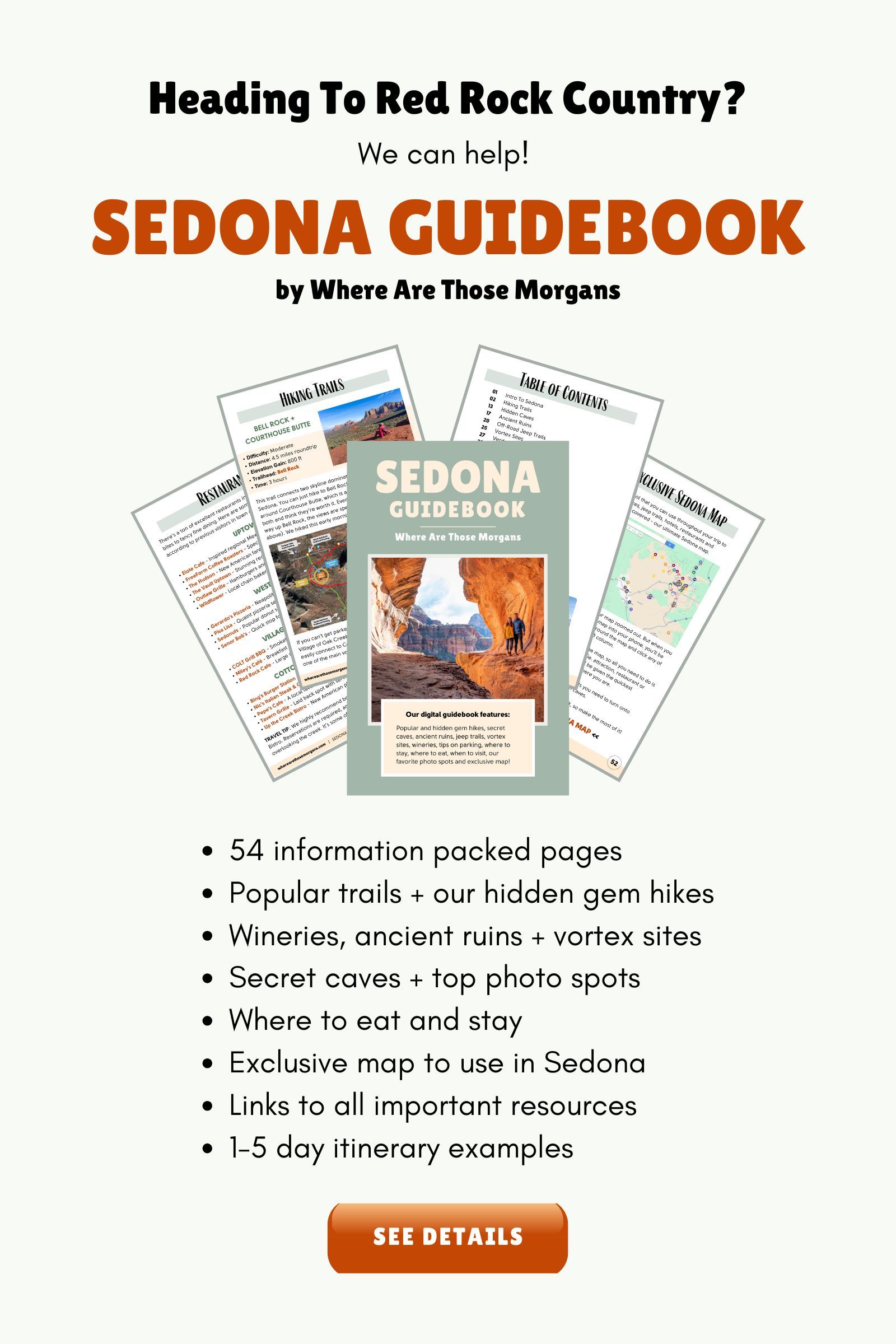
In Conclusion
The vortexes in Sedona have been luring tourists for decades. There is no denying this region in red rock country has a magnetic atmosphere that sets it apart from other popular travel destinations. For years, this vortex energy has made Sedona a hot spot for healing, meditation and positive thinking.
Everyone has different experiences and many people report a tingling sensation on exposed skin. Some people mention vibrations coming from the ground once they’ve entered the vortex. Others feel a palpable sensation across the back of the neck and across the shoulder blades.
Once you enter a vortex, keep breathing and try to notice differences in how you feel. Furthermore, vortexes effect sensitive people the most. Some people deeply believe in the vortex energy and others think it’s complete BS.
But there is no denying Sedona is an incredible place of natural beauty that many cultures have appreciated throughout the centuries. We felt completely at peace when we visited Sedona and even extended our stay because we loved it. After visiting 40 countries, we have never extended a stay anywhere so clearly something had a hold of us in Sedona.
However, there has been no measured magnetism or energy at these vortex sites. But many studies have correlated being outdoors with immune-boosting and mood-altering benefits.
So maybe the answer is simple and the Sedona spiritual vortexes are just a positive way our bodies respond to the breathtaking beauty of red rock country. But no matter what you believe, there is no arguing that Sedona is a special place.
If your Sedona itinerary allows, we recommend visiting two or maybe three of the Sedona vortexes sites in one day so you don’t have to rush around.
Next Steps
We hope our vortexes guide helps with planning your trip to Sedona.
Don’t forget you can book a travel planning video call with us if you’d like our expert help organizing your trip to Sedona. We can answer any questions you have or walk through a personalized itinerary to make the most of your time.
Still researching for your trip?
- What to know about a first trip to Sedona
- Here are the top things to do in Sedona
- Here’s exactly where to stay in Sedona
- These are the unmissable hikes in Sedona
- Here’s our 1-5 days in Sedona itinerary
- This our ultimate 7-day Sedona itinerary
Finally, if you’ll be visiting more places on the same trip, we recommend reading our Arizona travel guide for more helpful tips and advice.
Happy Travels,
Mark and Kristen
Enjoy this guide? Pin it for your visit!
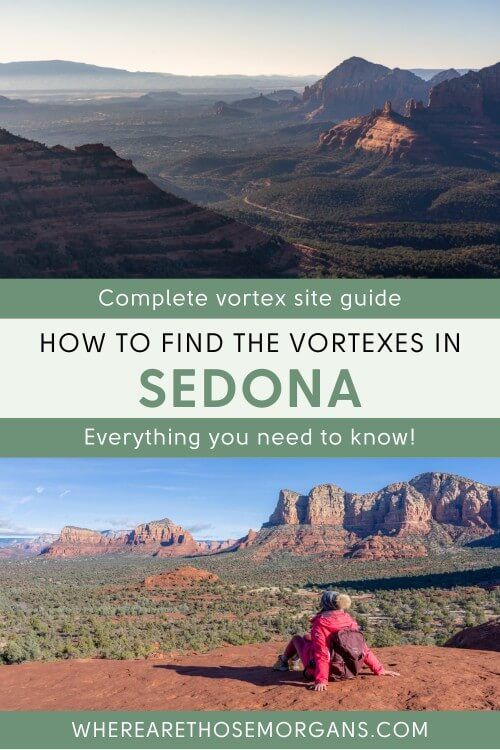
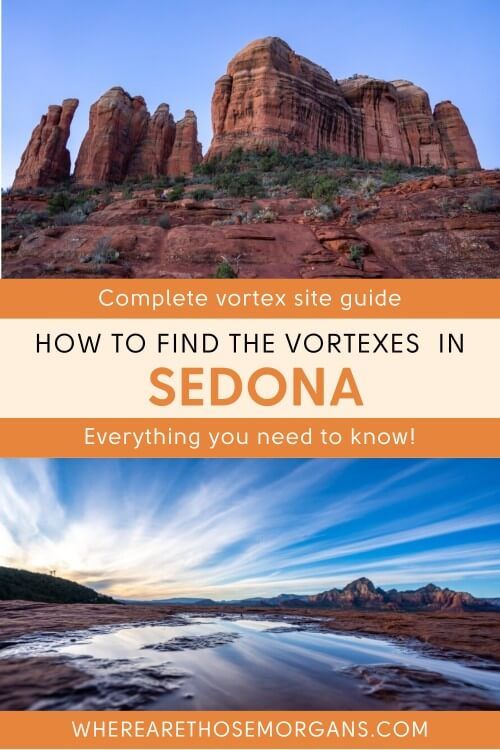
All Rights Reserved © Where Are Those Morgans, LLC. Republishing this article and/or any of its contents (text, photography, maps, graphics, etc.) in whole or in part is strictly prohibited.

